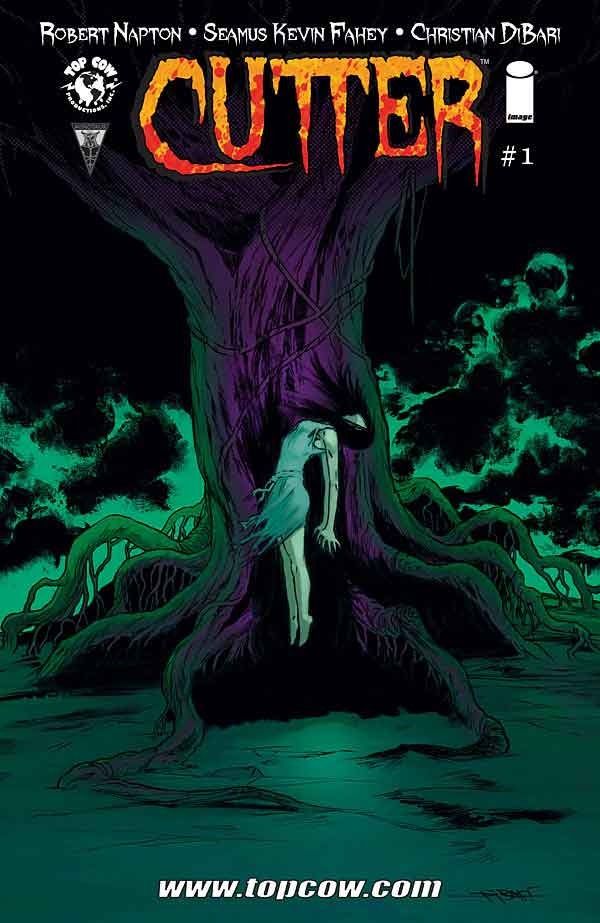"Cutter" a weekly four-issue mini-series running throughout October by Robert Napton, Seamus Kevin Fahey and Christian DiBari has a dark and disturbing tale at its center but one unfortunately marred by inconsistent art and occasionally stiff and unbelievable writing.
Though there's the hint in this first issue for a story that will subvert expectations in interesting ways, the horror so far is paint-by-numbers. It's not the worst for a horror book to tread familiar ground, as the execution is what matters, but both the writing and visuals are uneven at best.
Some of the dialogue is awkward and forced, feeling unnatural to the characters and story beats. Characters say things that feel entirely driven by plot convenience, which creates unbelievable scenes that take readers right out of the story. For example, protagonist Jeremy goes to the police and essentially tries to talk about a crime committed years ago that he believes is related to crimes being committed now. The Sheriff doesn't question him further but instead lets him go and tells him not to leave town (even though Jeremy came of his own volition and wasn't "brought in"). It's a totally unbelievable scene in every way made worse by the fact that one scene later the Sheriff investigates further by asking Jeremy's wife some questions -- the exact questions he should have asked Jeremy when he had him at the police station. The whole thing is desperately contrived and makes it hard to take the book seriously.
DiBari's black and white art has some solid moments that work well, but overall the work is uneven. A hedge is lovingly rendered but the back of a car in the same panel is so thinly sketched it's barely recognizable. A dining table has a massive oddly detailed tablecloth, but in the final panel, the size of the actual table has conveniently shrunk to allow the characters to grasp hands across the table and be in frame together. DiBari's choice to lightly sketch the killer's torture of herself (drawing a straight razor across her legs) is unfortunate as it really blunts the reality of what she's doing. The shading, zipatone and spot black choices feel largely random and give the book a frustrating amateurish quality overall, despite individual panels that suggest DiBari is more capable. The work especially fails to succeed as DiBari struggles with expressions and lacks consistency. As a result, it's hard to distinguish between deliberate choices and accidents.
While a weekly horror book in October is a great idea, at $3.99, the quality is just not where it needs to be. "Cutter" #1 suffers badly when compared with other terrifying, smart and well-considered horror books.

